Flashback: 2016 d3 Natural Systems winners
By Justine Testado|
Thursday, Feb 9, 2017

Related
Every year, the d3 Natural Systems competition challenges architects, designers, engineers, and students worldwide to propose sustainable urban strategies that could have potential applications in the future. First launched in 2009, the ideas competition encourages the ongoing investigation of natural systems — whether at the microscopic or universal scale — in an effort to discover new design strategies. For the 2016 Natural Systems edition, the expert jury selected three prize winners and seven special mentions.
Check them out below.
1ST PRIZE: 'Hydrological Cluster' by Anna Budnikova | Russia
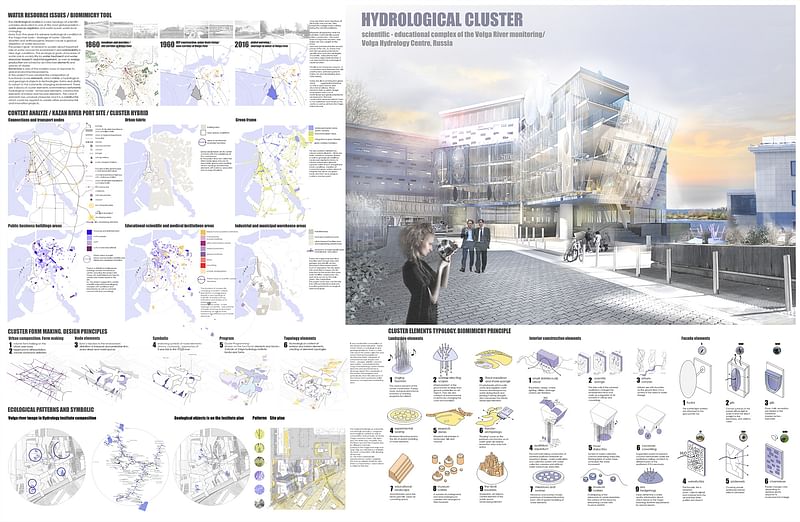
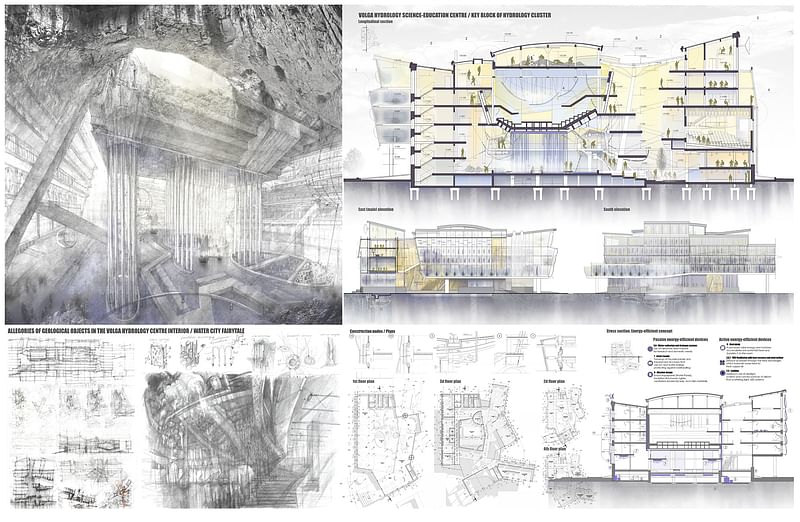
Project statement: “The «Hydrological cluster» is a new typology of scientific complex dedicated to one of the most global problem–water sources depletion and world ocean water level changing.More than five years it is adverse hydrological condition in the Volga river basin-shortage of water.Climatic disasters and anthropogenic impact cause a gradual depletion of water resources.The project goal-to remind to society about important role of water sources for environment and sustainability in New Age conditions. The ecological goals of increase of water role in society life by water treatment and water resources research and management,as well as energy production are solved by architecture elements and spaces of cluster. Biomimicry is one of the modern ways of response to global environmental problems.It was created the card of topology cluster elements, which mimic a hydrological and geological objects in technologies,forms and ability to adapt to the constantly changing environment. There was landscape elements,construction elements of interior and facade elements.
The site context is different by natural systems diversity – there are fields , meadows, swamps, forests, as well as geological elements. Landscape elements mimic to natural systems and allow regulating water level in drought and floods conditions. All specifics of cluster program and functioning of facade and design elements have been shown on the Volga Hydrology Centre example. There is a fairy tale about the water collection and water treatment possibility by architecture forms. Allegories of natural landscape shapes and forms – sponges, jellyfish, canyons and craters — overwhelmed the Volga river Hydrology centre interior. Sketches and emotional force drawings depict the complexity of the «water city» program and symbolically show the relevance of the nature and , in particular, water resources management everlasting issue.”
2ND PRIZE: “Abiogenesis 0.1” by Georgia Skartadou, Christos Nasioutzikis | Greece


Project statement: “The purpose of the ABIOGENESIS 0.1 self-reproducing automata is a process of design that occurs after a theoretical investigation about the intercourses as well as the exclusions between dipoles such as subject and object, natural and artificial, intention and randomness, design and not-design. The design tools that are chosen are non-dimensional points. The criterion behind this choice is the easiness of a non-dimensional unit to participate equally between object and subject, to change easily shape between the wide spectrum of the physically occurring and the artificially built structure and — most importantly — to highlight the main unifying element of the dipoles, the processes that unfold between the poles. The design shifts from the conceived object to the processes that materialize the object. The main principals that are finally chosen are those that condense the phenomenon of life (movement, metabolic exchanges, reproduction). Afterwards the design tools get incarnated through a narration in order for the design action to gain space, time, and materiality. The points transform into robotic automata and their space is located in areas of deposit of electric and electronic products. The final design is implemented through an automatic microrobotic platform, which when in communities-groups of familiar units form a system capable to produce spaces and environments, while in the same time reproduces itself.”

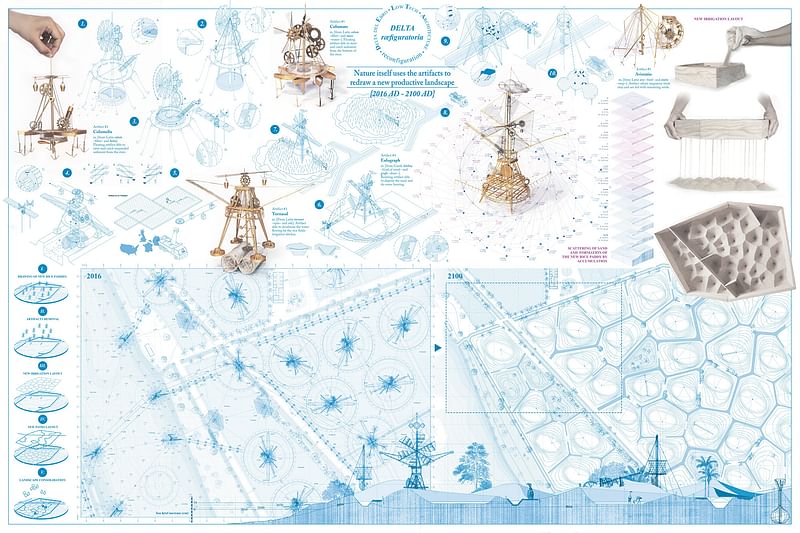
Project statement: “Treatise on the Ebro Delta restoration: The Ebro Delta, one of the most unique productive landscapes in the Mediterranean Sea, is sinking.The massive construction of reservoirs all over the Ebro River basin in the 20thcentury has caused the sand needed to sustain the Delta to stay in the mountains. On top of that, the sea level rises a centimeter per year due to climate change. According to experts, by2100 near 60% of its rice-growing surface will no longer be useful.
DELTA Raefiguratoria (Delta del Ebro Low Tech Architecture reconfiguration) is an architectural treatise from the past for the future. All kind of machines, inventions and architecture responsible on a second level for building large empires, architectural landmarks and productive landscapes, which have taken Mediterranean civilization to its maximum splendor, land on the Delta. Adapted to the local ways of building,fishing or growing rice, they will try to rescue one of their Mare Nostrum territories through artifacts. Nature will use these tools to draw a new landscape, dealing with the sand and the salt, so the Delta can reach the balance again.
With a retrofuturistic language, DELTA Raefiguratoriais meant to be a manifesto for low-tech architecture: for more than two thousand years it has achieved everything we know so far, why not give it a chance in this high-tech world to keep building our future?”
Check out the special mentions in the image gallery below.
All images and project statements courtesy of d3.
RELATED COMPETITION d3 Natural Systems 2016

RELATED NEWS Winning entries for d3 Natural Systems 2015

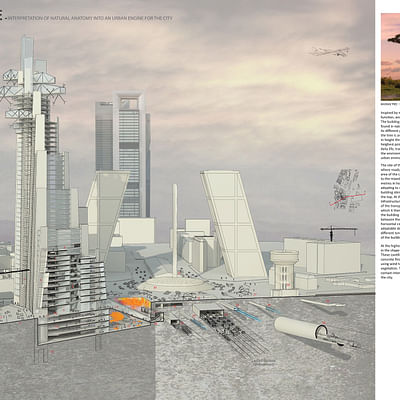
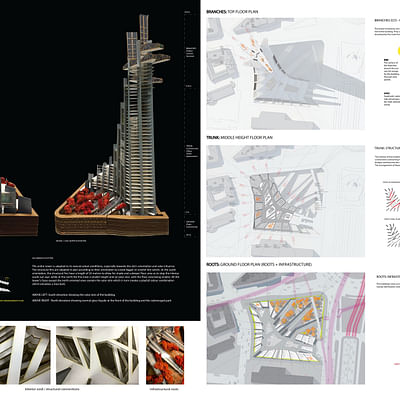
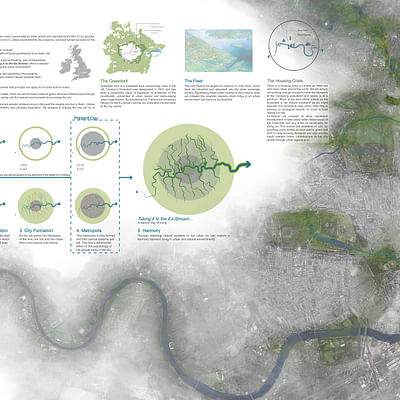

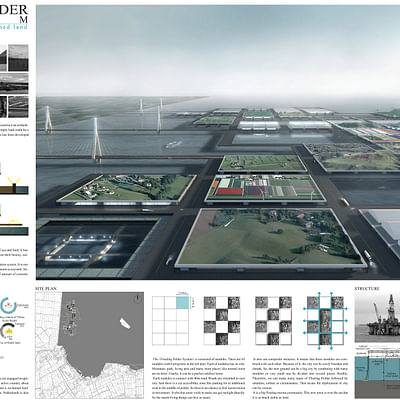
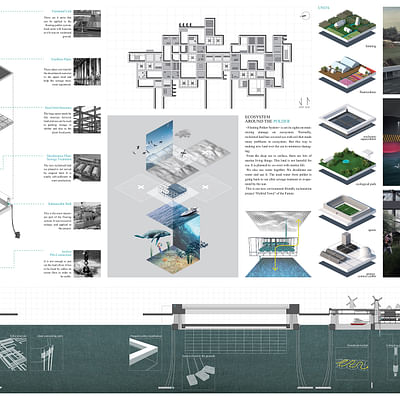
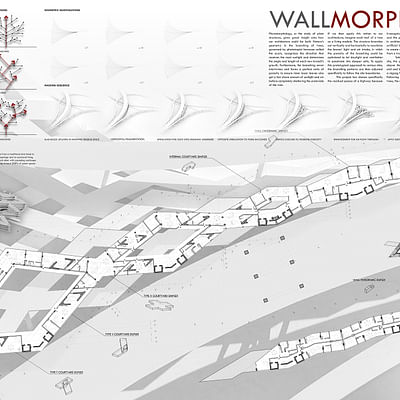
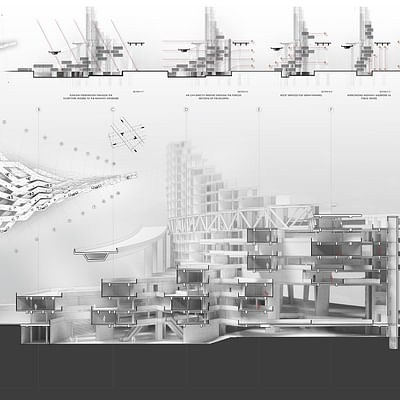
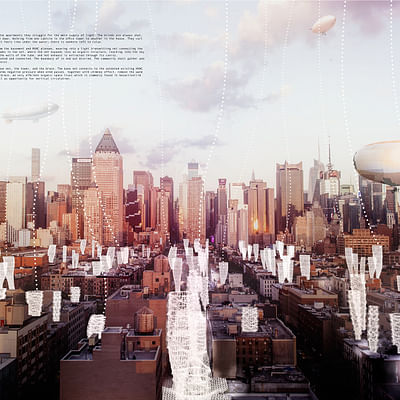
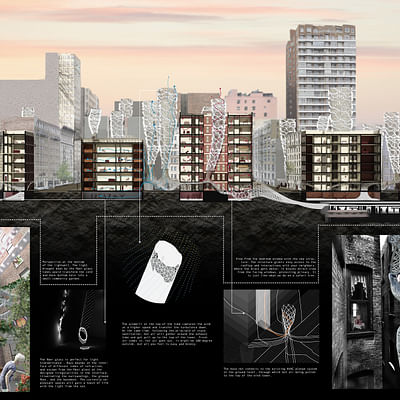
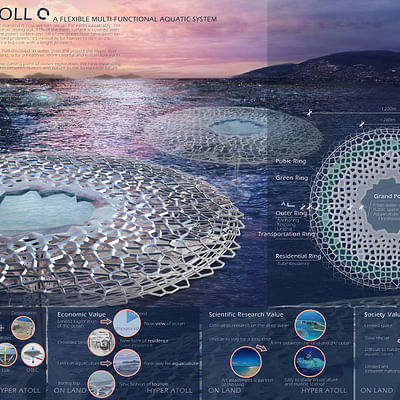
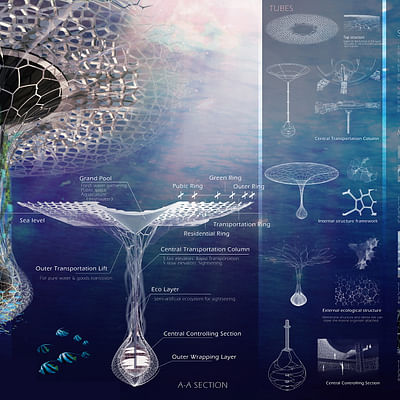
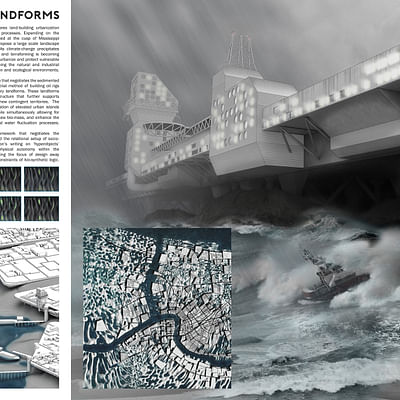


Share
0 Comments
Comment as :